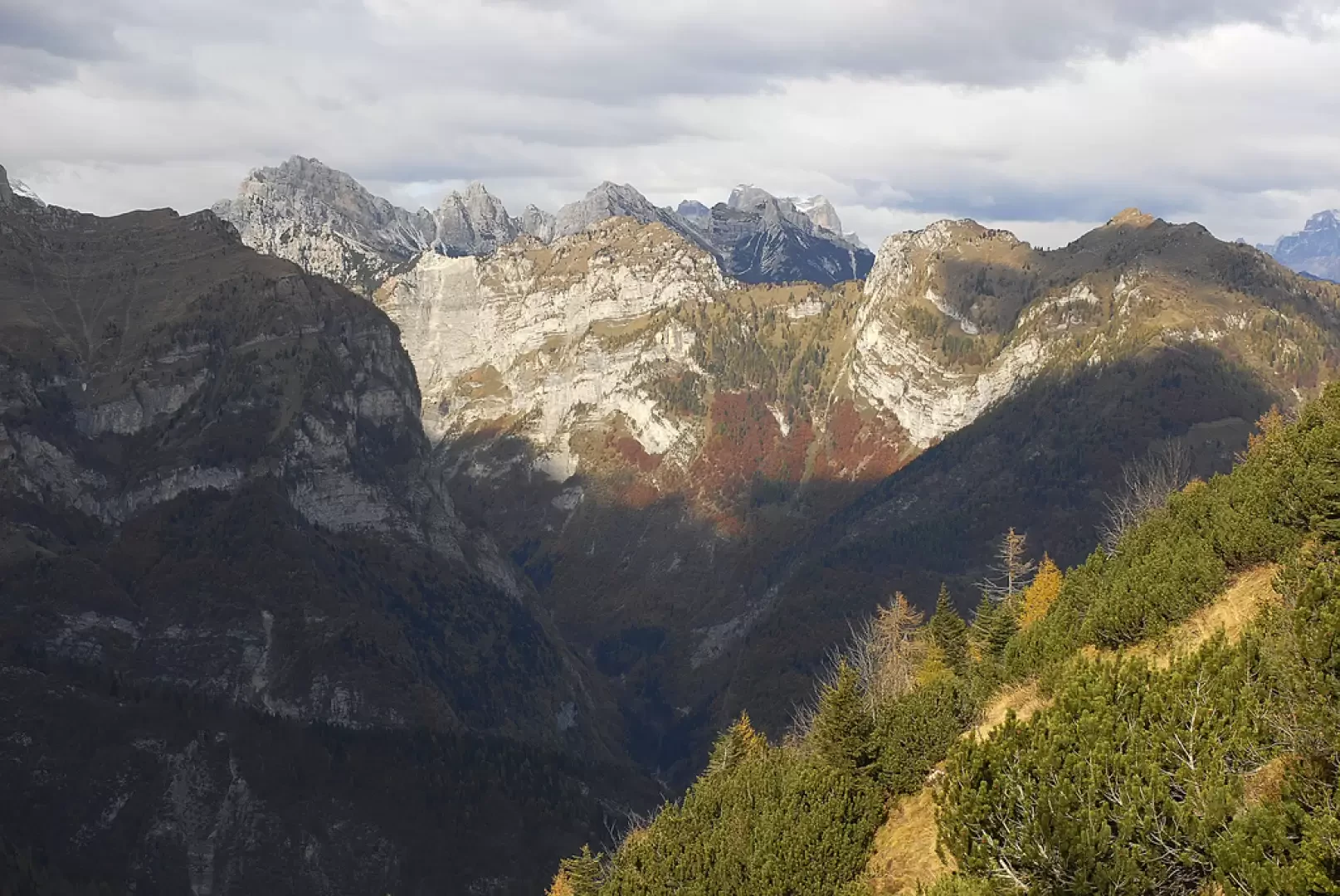Belluno Dolomites Park

Access
The Park can be reached from Belluno, Feltre or Agordo via the main state and regional roads (, and ). The nearest railway stations are in Feltre and Belluno, from where bus services depart towards the Park entrance centres (Sospirolo, Valle del Mis, Agordo and Longarone). The main information points and visitor centres are located in Pedavena, Feltre and Santa Giustina.
.Introduction
The Dolomiti Bellunesi National Park is located in the southern sector of the Dolomites, in the province of Belluno, in the Veneto region. Established by Ministerial Decree on 20 April 1990 and operational since 1993, the Park Authority protects an area of just over 31,000 hectares stretching between the Cismon and Piave valleys, including the Vette Feltrine, Monti del Sole, Schiara and Prampèr groups. It includes the territories of fifteen municipalities - including Belluno, Feltre, Val di Zoldo, Longarone, Sospirolo, Gosaldo and Agordo - and since 2009 has been part of the UNESCO 'Pale di San Martino - San Lucano - Dolomiti Bellunesi - Vette Feltrine' section, recognised as a World Heritage Site.
Description
The establishment of the Park responds to the need to preserve a mountain area of high naturalistic value, where the scarce anthropisation has allowed the survival of intact alpine environments, rich in biodiversity. The territory alternates between karst plateaus, wild valleys, limestone walls and deep gorges, in a mosaic of landscapes ranging from high-altitude flowering meadows to ancient beech and mountain pine forests. The main peaks - including the Schiara (2,565m), the Pizzocco and the Pavione - dominate the valleys and plateaus from above, while the complex morphology reveals clear traces of ancient glacial and karst processes, evidence of the long geological evolution of the area.
The flora of the Park has over 1,400 species, with numerous dolomitic endemisms. These include the Moretti's bellflower (Campanula morettiana), the Park's emblem, and the Venus's slipper (Cypripedium calceolus), one of the rarest orchids in Europe. The range of altitudes and the variety of soils result in a high degree of plant diversity: beech and spruce forests dominate the lower levels, while higher up, alpine pastures, screes and high-altitude meadows develop. In terms of fauna, the park is home to over 115 bird species, 20 species of amphibians and reptiles, over 3,000 chamois and more than 2,000 roe deer, as well as birds of prey such as the golden eagle, eagle owl and peregrine falcon. Among the large carnivores are the occasional presence of lynx and brown bear, symbols of the natural return of species that were once extinct in the region.
Alongside its naturalistic values, the park preserves evidence of an ancient relationship between man and the environment. The alpine pastures, terraces and historical paths bear witness to centuries of pastoralism and forestry exploitation, today re-evaluated in a sustainable way. The Park Authority promotes research and environmental education initiatives and encourages responsible forms of tourism. Hiking routes exceed 200 km and include stretches of the Alta Via n.1 of the Dolomites and itineraries of great natural interest such as Val Falcina, Val di Canzoi and Piani Eterni. Some of the most popular refuges - such as Pian de Fontana, Pramperet and Vazzoler - are ideal bases for observing the Dolomite environment and its exceptional biodiversity.
Information
Institution year 1990
Managing body Dolomiti Bellunesi National Park Authority
Area 31.512 ha (315 km²)
Minimum/maximum altitude 400 m - 2565 m
Maximum elevation Monte Schiara (2565 m)
Municipalities involved Belluno, Feltre, Longarone, Val di Zoldo, Agordo, Sospirolo, Cesiomaggiore, San Gregorio nelle Alpi, Gosaldo, Sedico, Rivamonte Agordino, La Valle Agordina, Santa Giustina, Pedavena, Ponte nelle Alpi
Official website www.dolomitipark.it